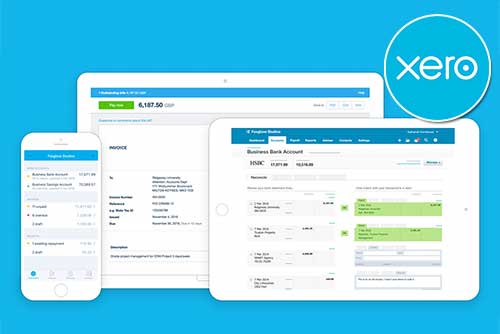What is Cash Flow Management: A Comprehensive Guide
In business, the term ‘cash flow’ is often thrown around, but what does it actually mean? And more importantly, what is cash flow management?
In this comprehensive guide, we’ll delve into the fundamentals of cash flow management, explore its importance, and provide techniques for businesses to optimise their cash flow management.
Understanding Cash Flow
Cash flow is the movement of money into and out of a business. It’s a critical component of a company’s financial health, representing the net cash and cash equivalents that are transferred within a company. When a company receives money, it’s considered a cash inflow. Conversely, when a company spends money, it’s considered a cash outflow.
Types of Cash Flow
Cash flow can be categorised into three main activities:
- Operating Activities: These involve the day-to-day activities of a business, such as sales revenue, expenses, and accounts receivable and payable.
- Investing Activities: This includes the buying and selling of assets, such as equipment, property, or investments.
- Financing Activities: These involve activities related to funding the business, such as taking out loans, issuing stock, or paying dividends.
What is a Cash Flow Statement?
A cash flow statement is a financial report that provides a detailed summary of the cash inflows and outflows of a business during a specific period. It categorises cash flows into three main activities: operating, investing, and financing. By analysing the cash flow statement, stakeholders can assess a company’s ability to generate cash, manage liquidity, and fund its operations, investments, and financial obligations.
The Importance of Cash Flow Management
Cash flow management is crucial for several reasons:
- Financial Stability: Effective cash flow management ensures that a business has enough liquidity to cover its operating expenses, debts, and other financial obligations, preventing insolvency.
- Strategic Decision-Making: By understanding their cash flow patterns, businesses can make informed decisions about investments, expansion, and resource allocation.
- Growth Opportunities: Healthy cash flow enables businesses to take advantage of growth opportunities, such as expanding into new markets, launching new products, or investing in research and development.
- Debt Management: Proper cash flow management allows businesses to manage their debt obligations efficiently, avoiding default and maintaining a good credit rating.
- Investor Confidence: Positive cash flow signals financial health and stability, instilling confidence in investors, creditors, and other stakeholders.
Techniques for Effective Cash Flow Management
To optimise cash flow, businesses can implement the following strategies:
Forecasting and Managing Cash Flow
Forecasting and managing cash flow involves predicting future cash inflows and outflows, which helps businesses anticipate both short-term and long-term financial needs. This process is crucial in making informed financial decisions that can steer a company away from financial pitfalls such as bankruptcy or loan default.
Cash flow forecasting regular updates and adjustments to reflect the ever-changing business environment. This includes considering factors such as market trends, economic conditions, and changes in customer behaviour. By doing so, businesses can ensure they have a realistic and accurate cash flow projection, which is essential for effective cash flow management.
Managing cash flow also includes optimising the timing of payments and receipts, reducing unnecessary expenses, and maximising revenue. This can help businesses maintain a healthy cash flow, which is vital for financial stability and growth.
Improving Cash Flow
Improving cash flow is a critical aspect of cash flow management. One effective way to improve cash flow is by making timely vendor payments. This not only helps maintain good relationships with suppliers but also allows businesses to take advantage of early payment discounts, further improving cash flow.
Another strategy is to manage inventory effectively. Holding too much inventory ties up cash that could be used elsewhere in the business. By optimising inventory levels, businesses can free up cash and improve their cash flow.
Negotiating payment terms with suppliers can also be beneficial. By extending payment terms, businesses can hold onto their cash for longer, improving their cash flow.
Leveraging Technology for Cash Flow Management
Advanced software solutions can automate and streamline cash flow management. One of the key benefits of using technology is the ability to automate collections. This feature sends timely reminders to suppliers, ensuring that payments are made on schedule. This not only improves cash inflow but also strengthens relationships with suppliers by maintaining consistent communication.
By analysing historical data, technology can predict future cash flow trends, helping businesses plan ahead. This cash flow projection can be invaluable in identifying potential shortfalls and allowing businesses to take corrective action before a crisis hits.
Common Cash Flow Management Issues and Solutions
Identifying Cash Flow Problems
Cash flow problems are not always easy to spot, but there are a few tell-tale signs that a business’s cash flow might be in trouble. For example, if a business is constantly struggling to pay its bills on time, this could be a sign of a cash flow problem. This could be due to a variety of reasons, such as slow-paying customers, high overhead costs, or poor inventory management.
Or if a business is profitable on paper, but is always short of cash, this could indicate a cash flow issue. This is often the result of a mismatch between the timing of cash inflows and outflows.
Addressing Negative Cash Flow
Addressing negative cash flow is a critical aspect of cash flow management. It’s a situation that can quickly spiral out of control if not handled promptly and effectively. The first step in addressing negative cash flow is to identify the root cause. Is it due to high operating costs, low sales, or delayed payments from customers? Once the cause is identified, appropriate measures can be taken.
For instance, if high operating costs are the issue, a thorough review of all expenses should be conducted. Unnecessary costs can be eliminated, and efforts can be made to negotiate better terms with suppliers or service providers. If low sales are the problem, strategies to boost sales, such as marketing campaigns or product improvements, can be implemented.
Delayed payments from customers can be a tricky issue to handle. However, implementing stricter payment terms, offering early payment incentives, or employing a dedicated collections team can help reduce the delay in payments.
Optimising Cash Flow
Optimising cash flow involves a strategic approach to maximise cash inflows and minimise outflows. One effective strategy is to shorten the cash flow conversion period. This means speeding up the process of converting business activities into cash, thereby bringing in money faster.
Another strategy is to optimise working capital. This involves pruning excessive expenses, improving collections, and maintaining adequate inventory levels. It’s about striking a balance between profitability and liquidity, ensuring no underutilisation of funds.
Cash flow management tools can automate collections, sending timely reminders to suppliers. This not only improves efficiency but also ensures a steady cash inflow.
Key Takeaways
The importance of effective cash flow management cannot be overstated. It is the foundation of financial stability, enabling strategic decision-making, unlocking growth opportunities, managing debt effectively, and inspiring investor confidence.





















